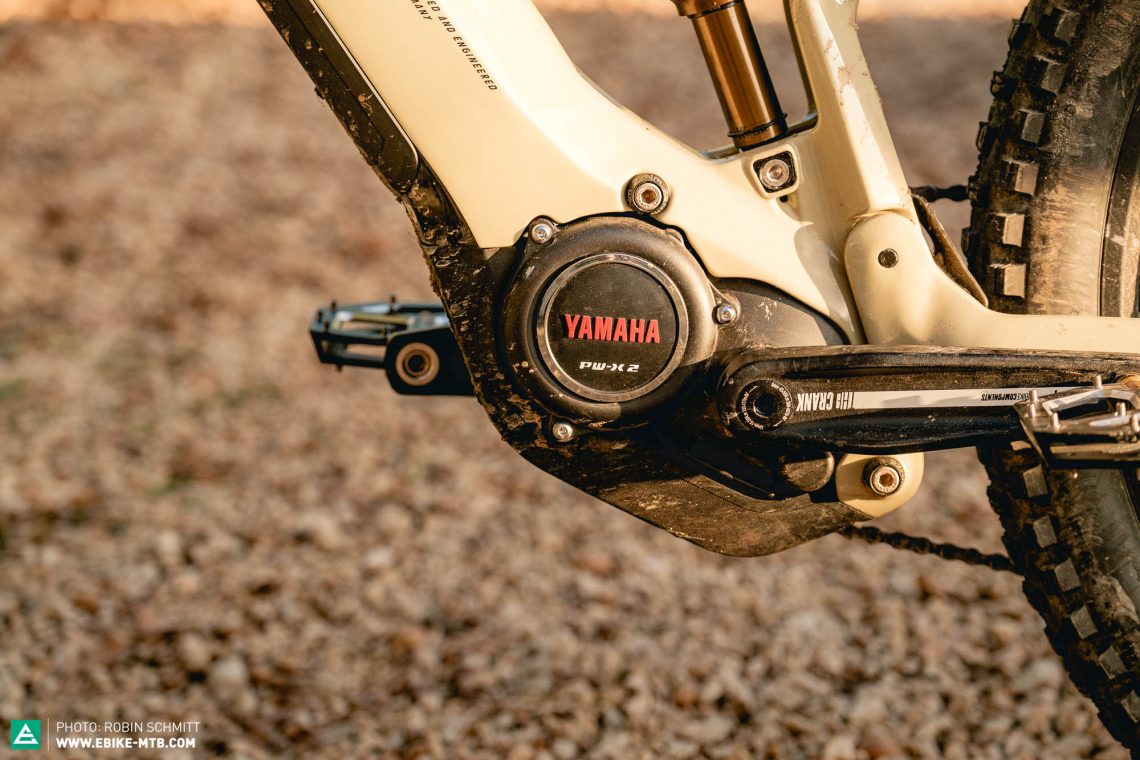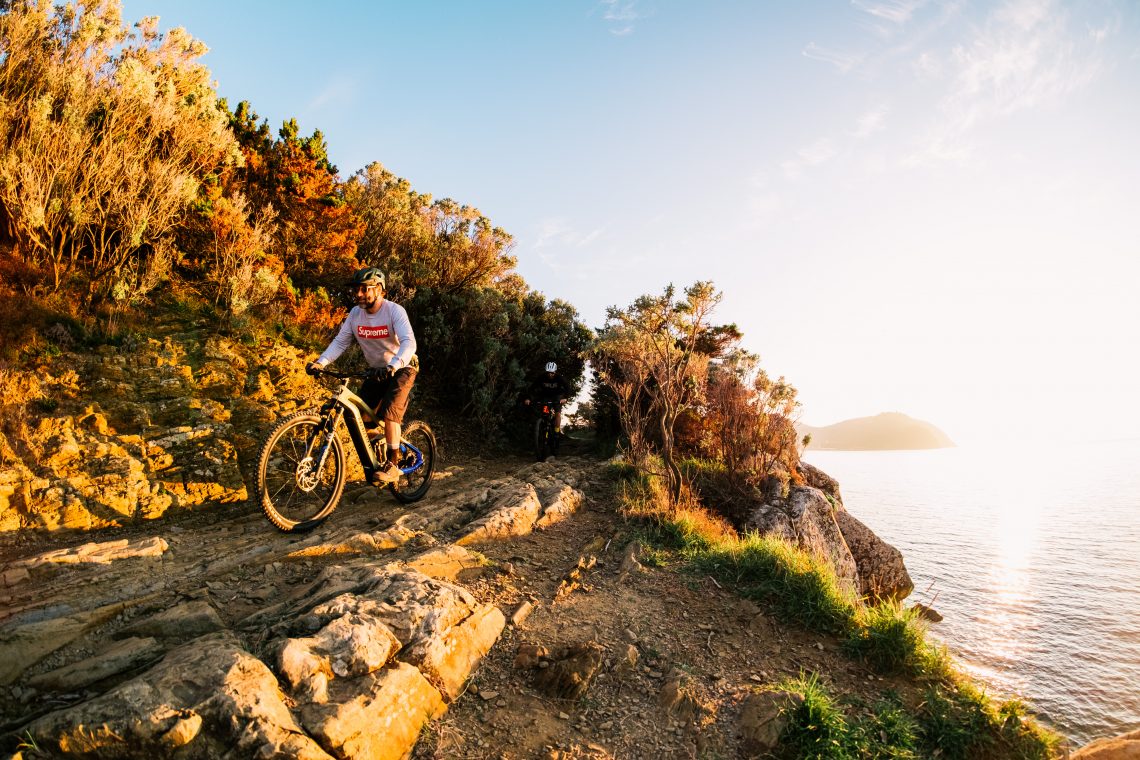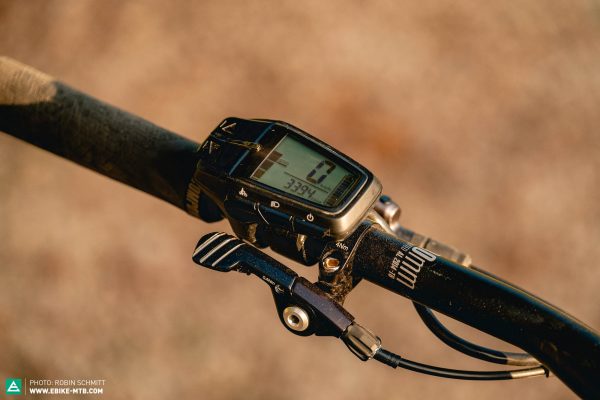Love it or hate it, the Yamaha PW-X2 is a motor with a unique character. The update doesn’t just comprise new software and sensors, the motor now also features a smart progressive mode. How does it compare to the other models in our test?
This motor is part of our big e-mountain bike motor test. Click here for background information and the criteria of this test.

The 3.06 kg Yamaha PW-X2 is packed with smart features to improve its ride. The Japanese motor has a wide range of usable cadences meaning that the PW-X2 can deliver its power at high pedalling cadences too. In addition, Yamaha offer a smart progressive mode that modulates support between the three middle levels of the five total levels of assistance. The Automatic Support mode is also capable of recognising the gradient of the terrain you are on, allowing it to deliver enough support from the first pedal stroke on steep slopes. While it achieves this successfully, the motor also reacts so sensitively in all modes that the bike has a tendency to shoot forward as soon as you so much as touch the pedals. That may be particularly problematic for inexperienced riders, not just on the trails but also on the road where this is more of a safety concern. In Extra Power mode, the strongest setting, with its 80 Nm torque and 360 % support, the Yamaha motor pushes you forward with a lot of gusto. In the lower settings, the maximum torque is reduced to 70 Nm but all of this is delivered from relatively low cadences. That means the PW-X2 propels you enthusiastically even without too much input, encouraging uphill cruising by taking over most of the effort from the rider. During short bursts of high cadence efforts, for example clearing a step, the PW-X2 has enough reserves and doesn’t run out of breath. Automatic Support mode reacts quickly and modulates the power effectively. Different to the Shimano Trail or Bosch eMTB modes, the motor ramps down the support relatively slowly in response to your effort, which results in a slightly less natural feeling ride. Similarly, the delay in support ramping down when you stop pedalling in High and Extra Power modes means that tight switchbacks often require you to grab the brakes to stay in control. The large steps in the freewheel also feel a little unnatural and above all create a lot of noise if you get back on the pedals after a short break. Conversely, at the 25 km/h assistance limit the Yamaha PW-X2 reduces its output gently and has minimal pedalling resistance when riding unsupported.

The Yamaha motor delivers a lot of power even at low cadences Just like a big diesel motor, you can just cruise up steep ramps.

With the PW-X2, Yamaha have introduced the new progressive Automatic Support mode. To activate it, you’ll need to read a manual first though. Even with the remote on Giant’s bikes, it’s anything but intuitive to use.

Unlike other models like the Bosch, the PW-X2 requires a lot of space on all sides around the crank axle. That poses some kinematic challenges for the designers of full-suspension mountain bikes.
Bike manufacturers have access to a complete system from Yamaha. Amongst the options are two displays with an additional remote, or the combination display with integrated buttons, similar to the Bosch Purion. The latter is probably best suited to eMTBs. However, the haptics and ergonomics are still worse than the comparable model from Bosch. Using the Automatic Support mode is also relatively unintuitive, with a long press of the button required to activate and deactivate it. If for example, just before a steep ramp, you then want to switch into Extra Power mode, it takes far too long to do so. For the battery, Yamaha offer 400, 500 and 600 Wh options. Just like Brose, bike manufacturers can use third-party batteries if they want. GIANT are one of the biggest users of the new motor and don’t just use their own internal 500 Wh and 625 Wh batteries, as well as optional 250 Wh range extenders, but also the minimalistic RideControl One remote with LEDs to display assistance mode and battery level. They have also given the motor their own name, the PW-X2 is dubbed the SyncDrive Pro, and developed an app to go with it that, similar to Shimano, lets you customise the individual assistance modes to your needs.
Our conclusion
The Yamaha PW-X2 is strong as an ox even at low cadences! Relaxed cruising and steep ramps are easy to master with this motor. However, you’ll have to give up on hopes of a natural ride feel and not even the new progressive mode can change anything about that. The high sensitivity of the motor to input at the pedals can be a problem for inexperienced riders. The standard motor components (such as the displays) are mediocre, though manufacturers are free to develop their own or use third-party solutions.
Tops
- powerful at low cadences
- no sudden loss in power at high cadences
- open choice of components for system integration
Flops
- motor reacts to very light pressure on the pedals
- large engagement angle of the freewheel
- activation of the Automatic Support mode
For more information head to yamaha-motor.com
Brose Drive S Mag | Bosch Performance Line CX | FAZUA Ride 50 Evation Firmware 2.0 | SACHS RS | Yamaha PW-X2 | Shimano STEPS E8000 | Shimano EP8 | TQ HPR 120S | Specialized SL 1.1
Did you enjoy this article? If so, we would be stoked if you decide to support us with a monthly contribution. By becoming a supporter of E-MOUNTAINBIKE, you will help secure a sustainable future for high-quality cycling journalism. Click here to learn more.
Words: Photos: E-MOUNTAINBIKE team









